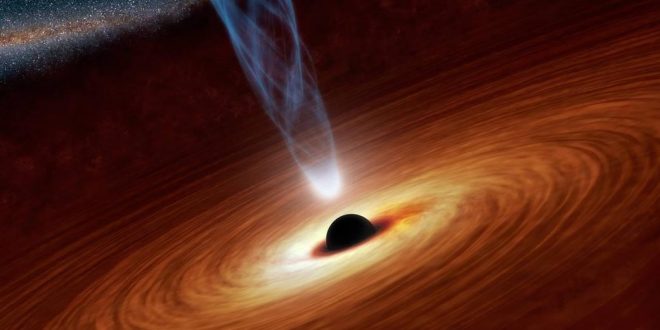An international team of astronomers who spent five sleepless nights staring into the darkest corners of the universe may have just captured the first ever image of a black hole.
There were nights when they had to stop their observations due to bad weather or something going wrong with their system, but they ultimately wrapped up on April 11th, 11:22 AM ET.
The Event Horizon Telescope is an array of powerful radio observatories around the world. When connected, they turn into one virtual telescope as big as the planet with a diameter of 6,200 miles. The scientists pointed those powerful radio telescopes to two tiny points in the sky: one of them is Sagittarius A*, the supermassive black hole in the center of our own galaxy, while the other is the black hole in the center of a nearby galaxy called M87.
“Instead of building a telescope so big that it would probably collapse under its own weight, we combined eight observatories like the pieces of a giant mirror,” said Michael Bremer, an International Research Institute for Radio Astronomy (IRAM) astronomer and a project manager for the EHT, to AFP.
“This gave us a virtual telescope as big as Earth – about 10,000 kilometers [6,200 miles] in diameter.” This telescopic array could find a golf ball on the moon if they felt like it, he said.
The EHT utilized telescopes in Arizona, Chile, Hawaii, Spain and Antarctica for this task. They studied Sagittarius A* from April 6-11, collecting around 10 petabytes of data in just five days. By comparison’s sake, the Large Hadron Collider in Switzerland collects roughly the same amount every eight months. That’s a fair guess for how long it’ll take to parse the EHT’s images and develop the first photo of a black hole, too.
“For the first time in our history, we have the technological capacity to observe black holes in detail,” said Bremer. “The images will emerge as we combine all the data, but we’re going to have to wait several months for the result.”
There’s more at stake to a black hole photo than bragging rights. Much is still unknown about the jet-black giants, such as how gravity behaves within Sagittarius A*. “Even if the first images are still crappy and washed out, [they] can already test for the first time some basic predictions of Einstein’s theory of gravity in the extreme environment of a black hole,” contributor Heino Falcke from Radboud University told Engadget.
https://www.youtube.com/watch?v=D4Cv2pU_lyI
Agencies/Canadajournal
 Canada Journal – News of the World Articles and videos to bring you the biggest Canadian news stories from across the country every day
Canada Journal – News of the World Articles and videos to bring you the biggest Canadian news stories from across the country every day



